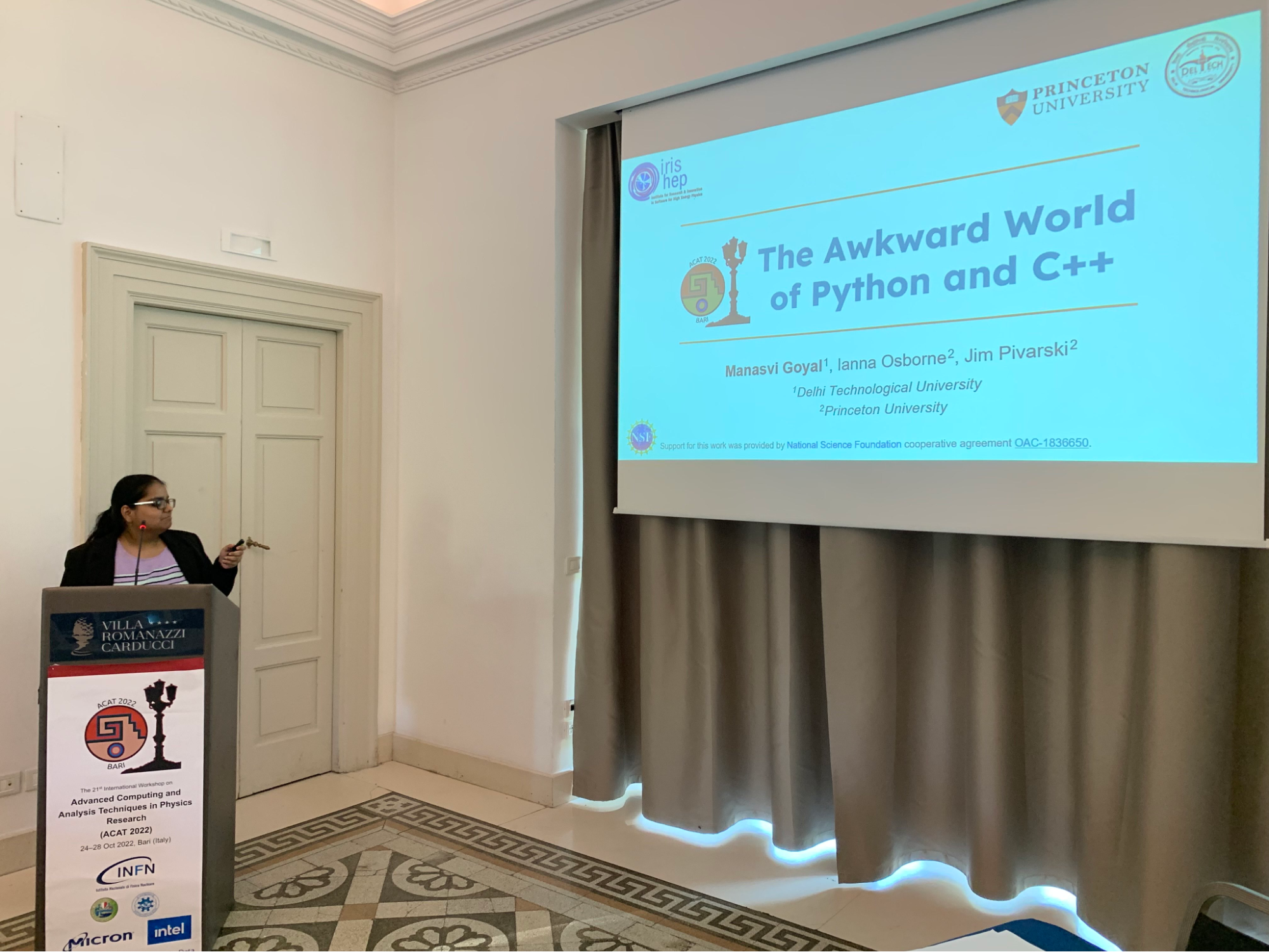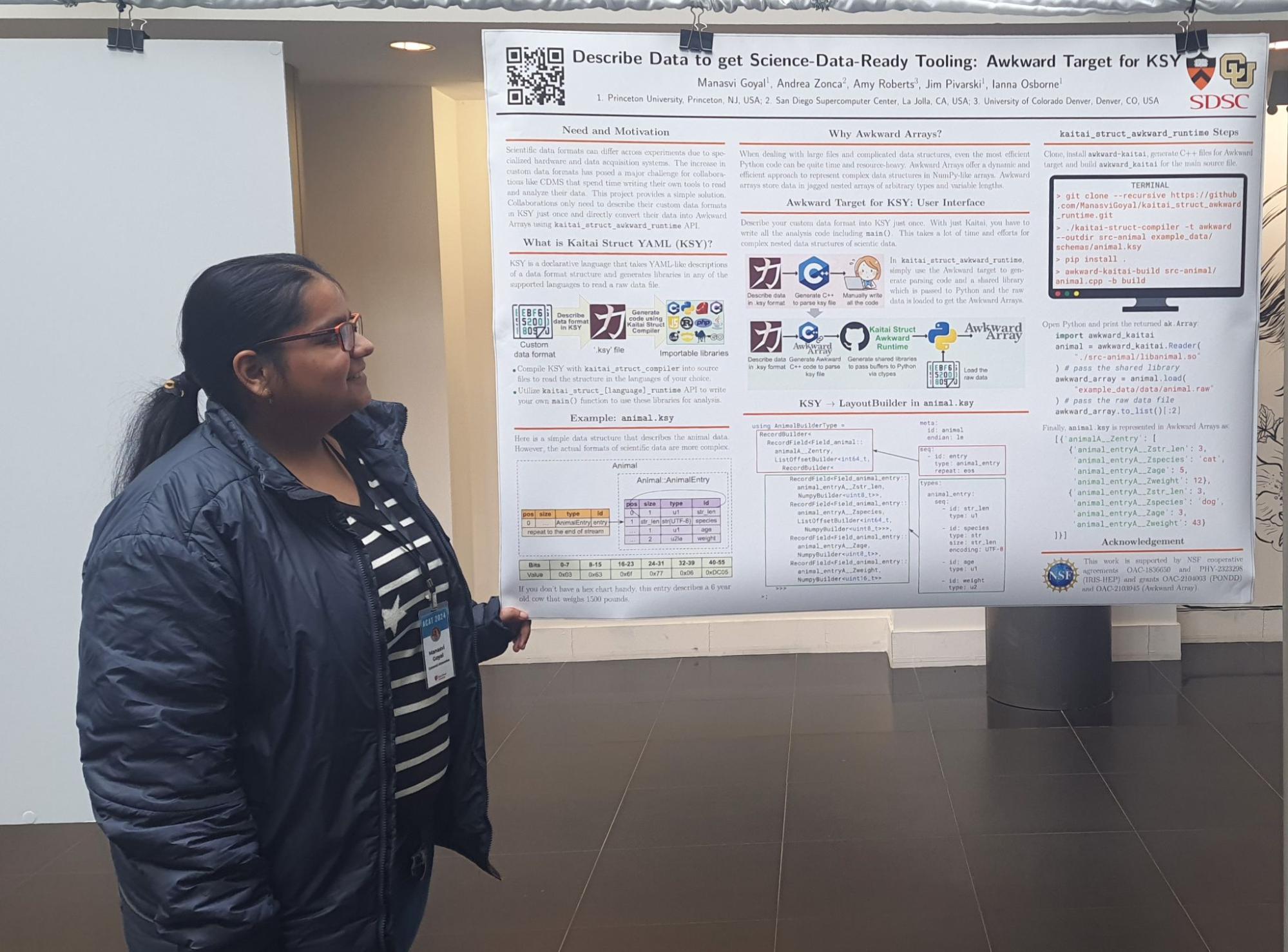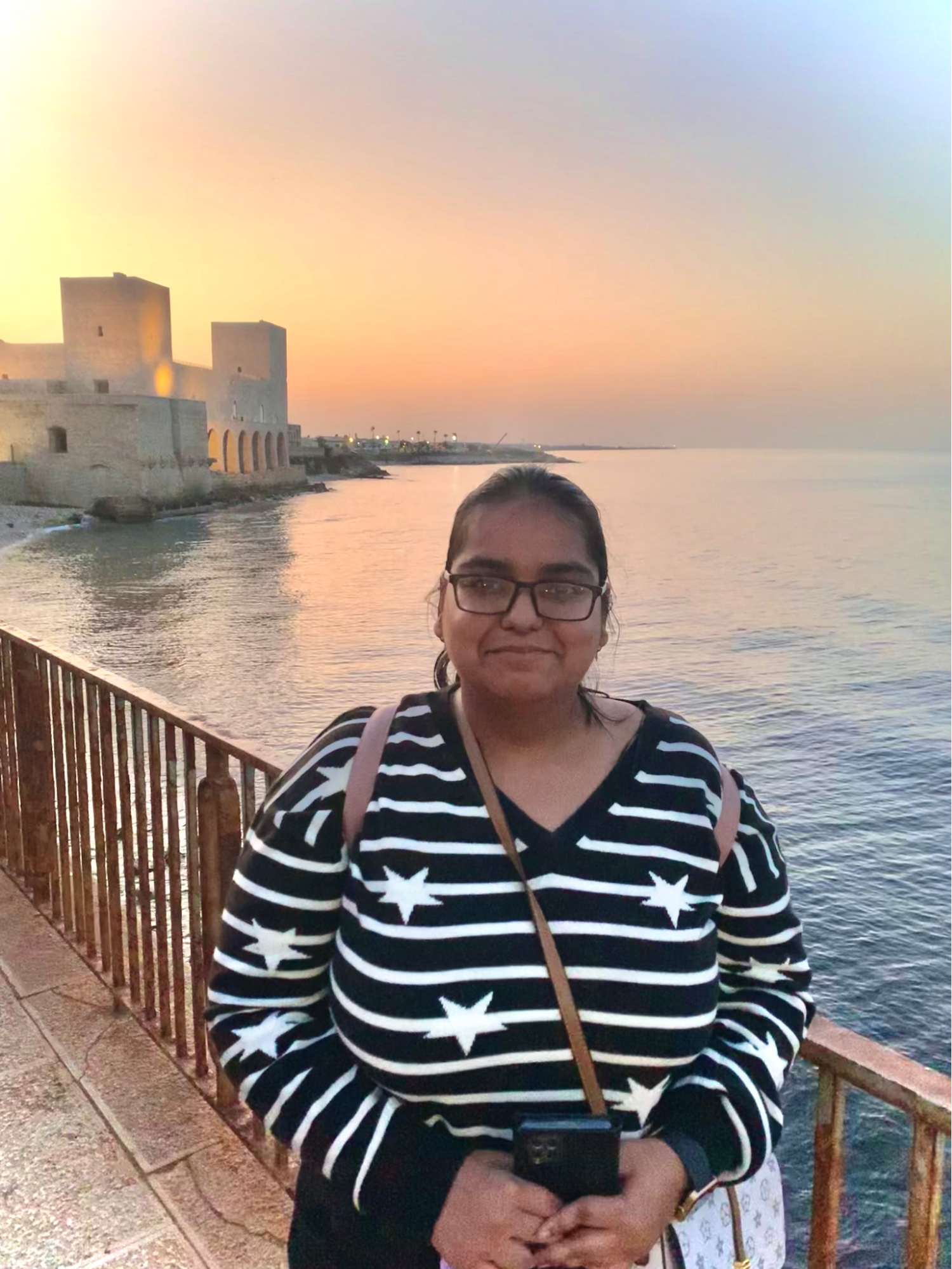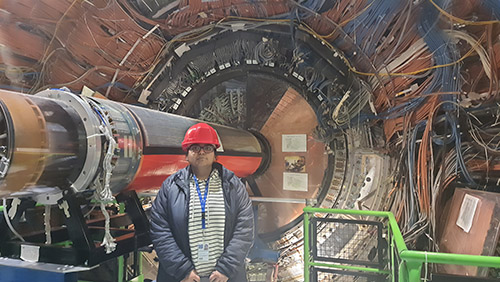How did the universe begin? Why is there something instead of nothing? What is reality composed of at the smallest of scales?
These are just some of the profound questions that high-energy physics seeks to answer. To get closer to the answers, the field needs new generations of talented researchers able to wield the latest in software technologies to parse ever larger and more complicated datasets.
Nurturing this next generation is a goal of the Institute for Research and Innovation in Software for High Energy Physics (IRIS-HEP), a $25M software institute funded by the National Science Foundation and headquartered within the Princeton Institute for Computational Science and Engineering (PICSciE). Through the IRIS-HEP fellowship program, undergraduate students get the chance to work on projects that develop their programming skills.
This story is the first in a series about gap year IRIS-HEP fellows and how the program has helped shape their careers.
The IRIS-HEP program welcomed Manasvi Goyal for two fellowships, originally as a summer intern in 2022 and then a year-long gap year project from June 2023 to July 2024. Following through on her many successful internships and research experiences worldwide, Goyal started pursuing her master’s degree in Computational Science and Engineering at Harvard University this Fall.
“My internships were very helpful for building a profile in computing,” says Goyal. “I had great experiences where I got to interact and collaborate with different kinds of people for the projects and at conferences.”
Goyal’s undergraduate academic background at the Delhi Technological University had originally centered more on industrial engineering. Yet during her studies, she got the chance to contribute to projects that involved computing and related technologies, such as machine learning, piquing her interest. Internships that proceeded at organizations including EY, INSEAD, and The University of Auckland, all focused on software, deepening the subject’s appeal.
Heading into her senior year, Goyal then successfully applied to IRIS-HEP as a software development intern, essentially cementing her career ambitions. “My work with Princeton really helped me realize that I am more interested in software engineering than industrial engineering,” Goyal says.

Goyal’s first participation in an international conference, giving a talk at a Computing Technology for Physics Research parallel session about her work as an IRIS-HEP fellow entitled “The Awkward World of Python and C++.” The conference was called “ACAT2022: 21st International Workshop on Advanced Computing and Analysis Techniques in Physics Research,” and held in October 2022 in Bari, Italy. Credit: Ianna Osborne
Jim Pivarski, a computational physicist at Princeton, and Ianna Osborne, a research software engineer at PICSciE and at the European Organization for Nuclear Research (CERN), mentored Goyal over her IRIS-HEP terms. Goyal worked on a special type of software library called an Awkward Array, which particle physicists at CERN, as well as scientists worldwide from various disciplines, use when they want to analyze vast amounts of data. “Scientific data can be more complex than simple data,” says Goyal. “Awkward Arrays provide a faster and efficient approach to handle complex nested data.”
Initially, her IRIS-HEP gap year project at CERN focused on furthering Awkward Array work she had continued pursuing as a software developer at the University of Colorado in February 2023, during her last semester of studies. That developer work overlapped with the new IRIS-HEP project, which started in June 2023. In October 2023, Goyal then shifted gears to a similar project developing graphics processing unit (GPU) support for Awkward Arrays. “My main task was to add the CUDA kernels to make Awkward Array functions work for GPUs,” she says.
GPUs were originally developed for computer gaming, but in the 2000s computer scientists began harnessing these processors for high-performance computing. Compared to the more-familiar CPUs (central processing units) found in everyday computers, which deal with one instruction at a time in a sequential manner, GPUs offer the advantage of parallel processing, meaning they can handle multiple instructions simultaneously, thus speeding up overall number-crunching.
“For CPUs, where the code runs serially, you can write a function that allows you to perform the same task repeatedly in a loop. But for GPUs, the main task is to execute tasks in parallel instead of sequentially,” explains Goyal. “My task was to develop algorithms that work in a parallel fashion.”

Goyal’s poster presentation entitled “Describe Data to get Science Data-Ready Tooling: Awkward Target for KSY,” presented at the ACAT2024 conference held in March 2024 in New York, USA.
The integral nature of computing for advancing high-energy physics was eye-opening for Goyal. “It was exciting to work in this area to see how interrelated computing and physics can be, and how computing can impact the physics community to make new advancements in the field,” she says.
Although Goyal had other gap year opportunities, a big reason she picked the IRIS-HEP project was for its open-source nature, meaning the coding she helps create is available for all users to view and use. “With open source, I can see my work being implemented and actively utilized by the users, which is incredibly rewarding,” Goyal says.
Looking ahead, Goyal will be conducting research on representation engineering in large language models at Harvard. Ultimately, Goyal envisions herself working in software engineering, perhaps for a company’s research department.
Over the course of her journey through computer science, Goyal has sought to make it easier for other women to achieve in a field that has historically been predominantly male. “I actively work on empowering women in computing,” Goyal says. For instance, she is a mentor in CERN’s Women in Technology program and has enjoyed many valuable, inspiring conversations with colleagues and fellow young learners. “I like sharing my experiences with other students to help them grow,” Goyal says.

Manasvi on an excursion to Trani, Italy as part of social activities organized at ACAT2022. Credit: Ianna Osborne
